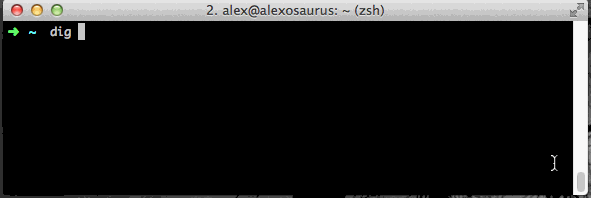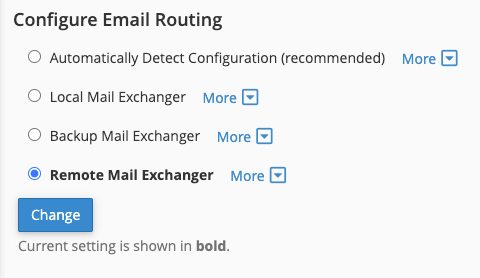Knowledge base article
Using Serversaurus’ nameservers but hosting your email elsewhere
View other technical support articles
Related articles
Accessing your site before changing DNS
Manage DNS zones with the cPanel Zone Editor
Other technical support articles
A beginners guide to email spoofing
Accessing your site before changing DNS
An introduction to email authentication
Basic WordPress security and site management
Check MySQL database table disk usage
Configure object cache with memcached and Litespeed Cache plugin
Configure spam filtering in cPanel
Connect via SFTP using SSH key authentication with FileZilla
Connecting to Serversaurus shared hosting via SFTP
Create a clone of your website
Create a SSH key pair and configure your SSH key in cPanel
Create a WordPress administrator via MySQL CLI
Create a WordPress administrator via phpMyAdmin
Create a WordPress cron task in cPanel
Disable automatic WordPress updates via wp-config.php
Download or restore individual files, directories or database backups with JetBackup
Enabling PHP extensions, Changing PHP Version and Setting PHP Options
Export or Import a MySQL database via CLI
Force HTTPS via .htaccess (cPanel)
Getting started with our DNS Manager
Getting Started with Virtual Machines
Go live with your WordPress staging website
Help! I need a backup of my cPanel-hosted website
Hide .html extension using .htaccess
How did my WordPress website get hacked? What do I do?
How to ensure website generated emails are delivered successfully
How to issue a Let’s Encrypt certificate
How to remove Site Software management
I can receive email but can’t send!
Install and configure Ghost blog in cPanel using Apache Reverse Proxy with mod_proxy
Introduction to LiteSpeed Cache
Manage DNS zones with the cPanel Zone Editor
Manual WordPress migrations in a nutshell
Migrate remote staging website to local hosting server
Migrate remote transactional website to local server
Migrating email from one POP/IMAP email account to another
My site and/or email service is down
Network Firewall (I can’t access my services on a non-standard port)
Optimising Wordfence firewall and security settings
Pointing your domain to Serversaurus
Pointing your domain to Squarespace with cPanel
Prevent website generated spam with CAPTCHA
Push updates from a staging to production website
Reconfigure production website to subdomain
Recover your hacked WordPress website
Remove Wordfence firewall block via MySQL CLI
Secure your WordPress installation
Setting up email on your iPhone
Subdomains for test sites & more
Unable to renew certificate: The Let’s Encrypt HTTP challenge failed
Understanding CloudLinux resource limits
Update a WordPress website to use a new domain name
Update your WordPress username via phpMyAdmin
This article will teach you how to update your domain to use Serversaurus nameservers but retain your external email hosting
1. Determine what your current MX records are
You will need to figure out what the MX records (which instruct mail servers and clients about where a domain's email service is hosted).
You can do this either on a terminal on Mac OS X or UNIX-like systems (via `dig +short your-domain.com.au mx`)

Or you can look it up online using a tool such as MXToolbox. In either case, copy the records down somewhere.
2. Setup the MX records in cPanel
Login to your cPanel account. If you have forgotten your cPanel credentials, they were included in the original Welcome to Serversaurus or IMPORTANT: Hosting Documentation email which you can find in your inbox ,otherwise follow the instructions on how to update your cPanel password.
Navigate to the Zone Editor function, using the Find function in cPanel to help you.

You should now view a list of the domains hosted under your account. To the right of the domain you want to update, select Manage.
Delete any current MX records and then re-enter all of the MX records you copied down previously.
You can add your new MX records by selecting Add Record and enter the previously copied records into the appropriate fields.
3. Update your mail routing to Remote.
For the server to route to a remote mail server we need to update the email routing settings, you can do this by navigating to the Email Routing function in cPanel.
Select your domain from the drop down list, then select Remote Mail Exchanger under Configure Email Routing.

4. Update your nameservers
At your registrar change your nameservers for the domain to:
ns1.serversaurus.com ns2.serversaurus.com ns3.serversaurus.com ns4.serversaurus.com
Once those steps are complete, your mail will continue to be delivered to the current mail provider without any downtime!
Published November 25, 2020. Last updated November 30, 2023.
Can't find what you're looking for?
"*" indicates required fields